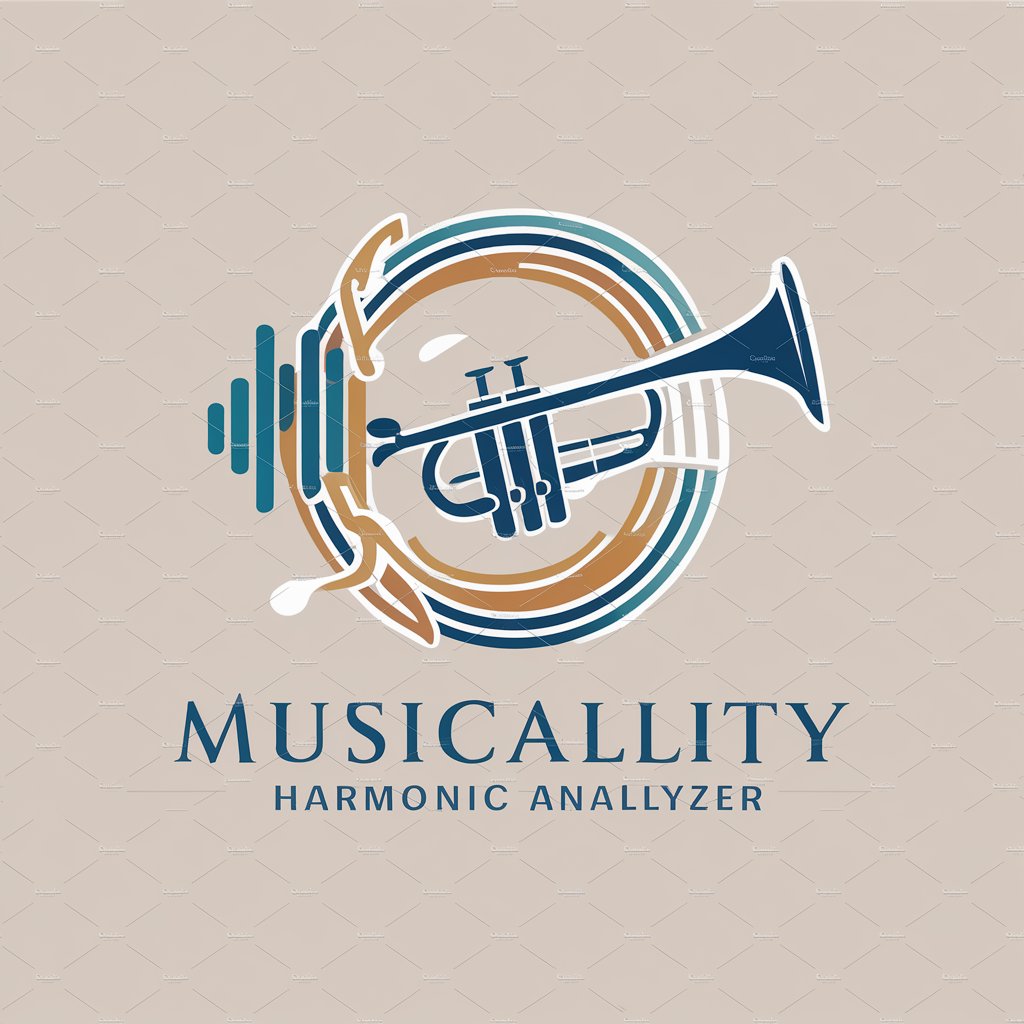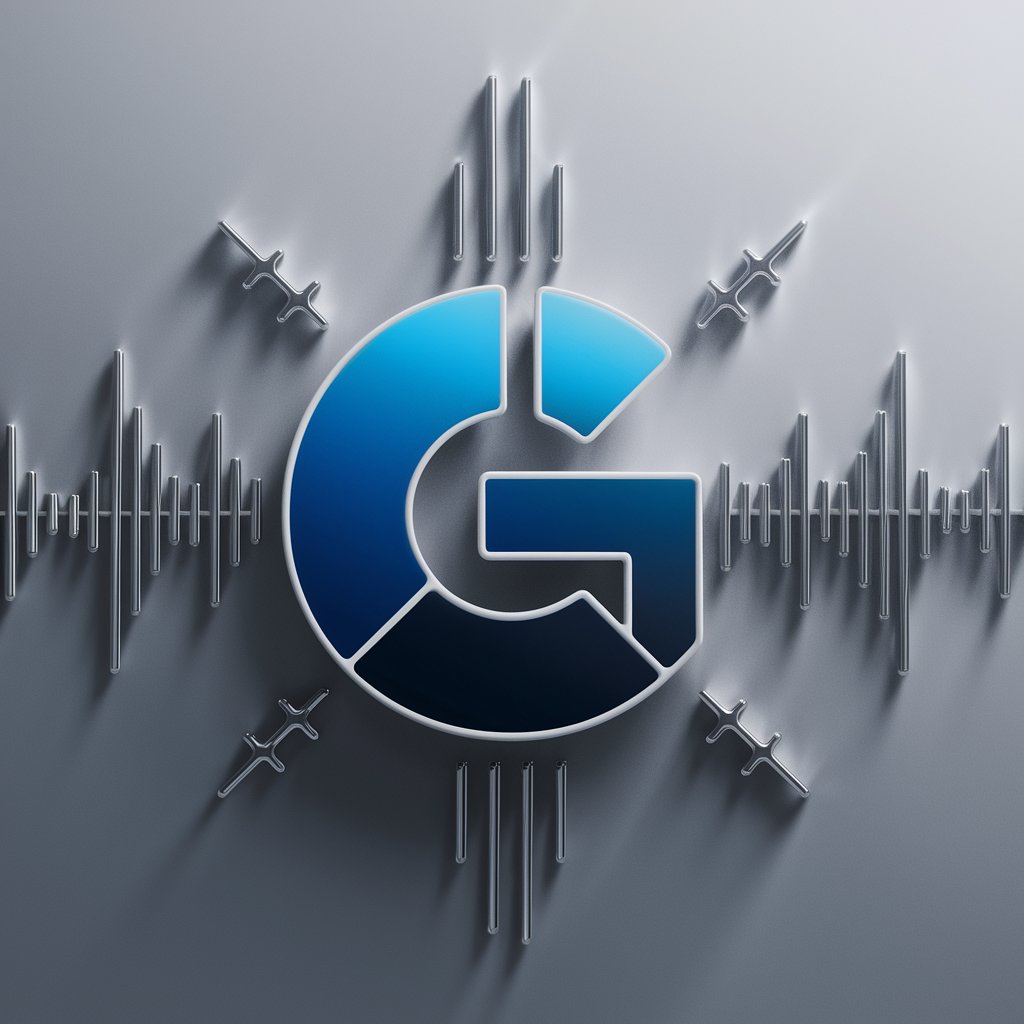
Musicality Harmonic Analyzer - Detailed Music Analysis

Welcome! Ready to refine your musical skills?
Elevate your music with AI-powered analysis
Analyze the tonality and harmonics of my trumpet performance.
Can you evaluate the note attack in this recording?
I'd like feedback on the harmonics of this saxophone piece.
Could you analyze the overall sound quality of my flute performance?
Get Embed Code
Musicality Harmonic Analyzer: An Overview
Musicality Harmonic Analyzer is designed as a specialized tool for musicians, educators, and music enthusiasts focusing on the analysis of wind instruments, with a particular emphasis on trumpets. It is adept at providing detailed feedback on various musical elements such as tonality, harmonics, and note attack. The GPT is equipped to make educated guesses in scenarios where audio quality might not be pristine, ensuring users receive valuable feedback even from less-than-ideal recordings. For instance, when analyzing a trumpet solo, it can highlight areas where the tonality may indicate a tightening or loosening of the embouchure, suggest improvements for achieving a cleaner attack on high notes, or identify unintended harmonics that could be smoothed out with practice. Powered by ChatGPT-4o。

Core Functions of Musicality Harmonic Analyzer
Tonality Analysis
Example
Determining the clarity and purity of notes in a trumpet performance, identifying moments of brilliance or flatness.
Scenario
A music student records their practice session and uploads it for feedback on how to improve their tonal clarity and achieve a more consistent sound.
Harmonics Identification
Example
Identifying overtone series in a flute solo and providing suggestions on how to enhance or reduce certain harmonics.
Scenario
A professional flutist seeks to refine their sound by understanding which overtones are predominant in their playing and how they can manipulate them for desired effects.
Note Attack Evaluation
Example
Evaluating the sharpness and precision of note attacks in a saxophone piece, suggesting techniques for smoother transitions.
Scenario
An aspiring saxophonist wants feedback on their technique for attacking notes at different dynamics and registers, aiming for a performance that balances energy and smoothness.
Who Benefits from Musicality Harmonic Analyzer?
Music Students
Students learning wind instruments can greatly benefit from detailed feedback on their playing, helping them understand and improve upon aspects like tone quality, harmonic richness, and note articulation. This leads to accelerated learning and a more solid foundation.
Music Educators
Educators can use the GPT to provide additional, objective feedback to their students. It serves as a tool for enhancing lesson plans and focusing on specific areas of improvement, making teaching more effective and focused.
Professional Musicians
Professionals seeking to maintain or refine their craft can benefit from the nuanced analysis of their performance, discovering subtle areas for improvement or validation of their current techniques and styles.

How to Use Musicality Harmonic Analyzer
Begin Your Journey
Start by visiting yeschat.ai to access a free trial without the need for login credentials or a ChatGPT Plus subscription.
Upload Your Audio
Select and upload a sound file of your instrument playing. The platform supports a wide range of audio formats for comprehensive analysis.
Specify Analysis Criteria
Choose the specific aspects of your playing you wish to analyze, such as tonality, harmonics, or note attack, for tailored feedback.
Review the Analysis
Receive detailed feedback on your playing, with insights into areas of strength and recommendations for improvement.
Iterate and Improve
Use the feedback to refine your technique and re-upload for further analysis, fostering continuous musical growth.
Try other advanced and practical GPTs
Calendar event link
AI-powered Calendar Event Creation

Personal Trainer Pro
AI-Powered Personal Fitness Coach

Finance Explainer
Decoding Finance with AI Power

Kaiser Crypto Analyst Pro
Empowering Your Crypto Trading Journey with AI

Cyril's API reference guide for GPT API
Power your apps with AI

DJ GPT
Elevate your audio with AI-powered mastering

Life Assist
Empowering lives with AI-driven advice

Poké-Digi Crossover Guide
Merge Worlds, Create Unique Digital Creatures

Social Savvy Coach
Empower Your Social Interactions with AI

Event Ticket Assistant
Seamless AI-Powered Ticketing Experience

Customer Experience Analyzer Pro
AI-Powered Customer Experience Insights

Finance Butler(ファイナンス・バトラー)
Empowering financial decisions with AI

Frequently Asked Questions about Musicality Harmonic Analyzer
What makes Musicality Harmonic Analyzer unique?
It specializes in analyzing wind instruments, particularly trumpets, offering precise feedback on tonality, harmonics, and note attack to help musicians refine their skills.
Can I analyze non-wind instruments with this tool?
Absolutely! While its specialty is wind instruments, the analyzer is versatile enough to provide valuable feedback for any musical instrument.
Is it suitable for beginners?
Yes, the analyzer is designed to be user-friendly for musicians of all levels, providing educational feedback that supports learning and development.
How can I get the most out of my analysis?
For optimal results, record in a quiet environment, focus on clarity of sound, and specify the aspects of your playing you want feedback on.
What if my recording is unclear?
The analyzer makes educated assumptions in the case of unclear recordings, providing the best possible feedback while explaining these assumptions for your understanding.